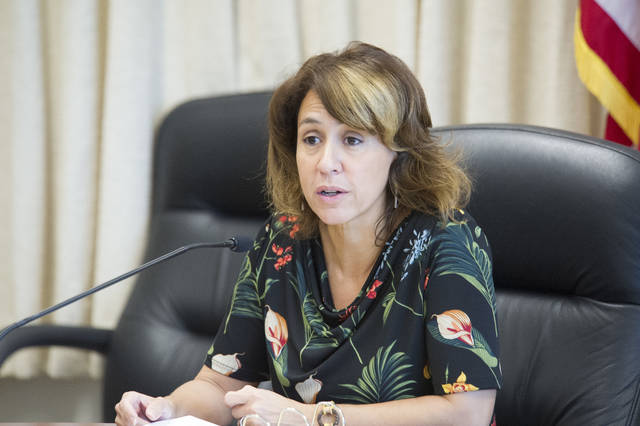Superintendent denounces ‘double standard’ in school rankings by Honolulu Magazine

CRAIG T. KOJIMA / SEPT. 6
Christina Kishimoto bridled at what she sees as a “double standard.” The Private School Guide put out by Honolulu Magazine has no performance measures or ranking.
Superintendent Christina Kishimoto is taking on Honolulu Magazine for ranking each public school with a grade from A to F while letting private schools off the hook.
“Grade everybody or grade no one, but be fair to public schools,” Kishimoto tweeted late Thursday, linking to a letter Opens in a new tab she posted online at hawaiipublicschools.org Opens in a new tab. She denounced what she described as a “double standard.”
“Every year, Honolulu Magazine puts out a ‘Grading the Public Schools’ edition that ranks schools on a bell curve,” Kishimoto wrote. “And every year that same magazine puts out a ‘Private School Guide’ with lovely pictures and narratives and your questions answered about navigating the admission and payment processes.”
Kishimoto said she believes public schools should be responsible for their performance and she said they are, pointing to the wealth of data the Department of Education makes available online about each campus.
But she bridled at what she sees as a “double standard.” The Private School Guide put out by the magazine has no performance measures or ranking.
“Be fair,” Kishimoto said. “Judge us equally.”
Don't miss out on what's happening!
Stay in touch with breaking news, as it happens, conveniently in your email inbox. It's FREE!
Grade everybody or grade no one, but be fair to public schools. https://t.co/EgGsrnVq0K #HI4PublicEd pic.twitter.com/AQ8LLiAqXJ
— Hawai‘i DOE (@HIDOE808) April 4, 2019
Honolulu Magazine publisher Alyson Helwagen said the magazine has issued its public school rankings for more than a decade and recognizes that the issue is controversial.
Asked whether it makes an effort to get performance data for its private school edition, Helwagen said that the campuses vary too much in curriculum and standards.
“Every private school assesses their kids differently,” she said. “Even if we did get student achievement from all the private schools we wouldn’t be able to compare it in any meaningful way.”
The magazine partners with the Hawaii Association of Independent Schools to put out the private school guide, which was sponsored last year by American Savings Bank. School profiles are paid for by the schools themselves, who control their content, and the guide also includes independent features by Honolulu magazine writers.
“Grading the Public Schools” is the cover story in this month’s issue of Honolulu. Helwagen defended the A to F ranking of public schools as an accessible way for parents to see how campuses stack up.
“It isn’t about pitting one school against another, or publishing that a certain school is getting an A or and F,” she said. “It’s about helping people digest the data.”
The magazine incorporates a range of measures in coming up with its letter grades, using data from the Department of Education’s website. They include math, English and science proficiency, absenteeism, graduation rates, and growth in test scores over the previous year. This year, it also incorporated school climate, as reported by students on surveys conducted by DOE.
“We see it as a community service to make sense of all this data in this way,” Helwagen said.
Kishimoto said the magazine rankings don’t consider the neighborhood each school serves, whether it is remote or whether the children are disadvantaged, which can affect resources and readiness to learn.
“There’s no nuance or context, no trend data indicating where there have been improvements, no acknowledgement of unique challenges among communities,” she said. “Just a list of schools and a grade.”
To come up with its grade for each campus, the magazine does not factor in demographics, such as whether many students are low-income, or still learning the English language or in special education, or whether the school is remote, which can also affect resources and readiness.
The published rankings do show whether a school is Title I, which means it is a high-poverty school under the federal definition, but that information is not factored into the grading.
Kishimoto lamented the branding of schools with an “F” grade, citing as an example a “geographically isolated school that successfully qualifies students to go to the state and international science and engineering fairs every year,” and is headed to the FIRST Robotics world championships.
Helwagen said the magazine is transparent about its approach so readers can make their own judgments.
“Educating our children is critically important,” she said. “Public schools are taxpayer funded, so it’s something we all have a stake in. The vast majority of us here in this building have children in public school. Our job is to bring information to light.”




